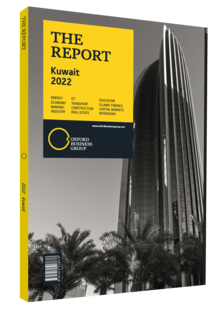Kuwait's Islamic banks seek greater efficiencies through consolidation
Kuwait’s Islamic banking sector has consolidated its position as one of the largest markets in the world with the completion of the acquisition of Bahrain’s Ahli United Bank (AUB) by Kuwait Finance House (KFH) in October 2022. Prior to the deal, the Kuwait government held 23.9% ownership in KFH, an additional 24.1% via the Kuwait Investment Authority, and 18.69% in AUB. The Kuwaiti lender initially planned to issue one share for every 2.3 shares of the Bahraini bank as part of an $8.8bn all-share deal offer in 2019. However, the deal was postponed at the onset of the Covid-19 pandemic in early 2020. Since the initial proposal, the KFH share price rose 66%, valuing the lender at $25.8bn, while AUB’s shares rose by 27%, valuing the bank at $10.3bn.
During this period KFH reassessed the deal and increased its bid to $11.6bn, offering one share for every 2.7 shares of AUB. Following the acquisition and share swap, KFH plans to convert AUB and its subsidiaries into sharia-compliant units. The deal has turned KFH into the second-largest Islamic bank globally at $115bn in assets. It has increased its market share from 22% to 28% of domestic assets, making it among the largest banks in Kuwait.
Consolidation Trend
The KFH-AUB merger signals the latest episode in multiple waves of consolidation in the region’s banking sector triggered by the oil slump in 2014. As a result of increased pressure caused by reduced credit growth, higher costs of funds and deteriorated asset quality due to a lower oil price environment and economic uncertainty surrounding Covid-19, many Gulf lenders have sought to scale operations and compete more effectively through mergers or acquisitions. Triggered by the merger of the UAE’s two largest banks, the National Bank of Abu Dhabi and First Gulf Bank, in 2017 to form a $183bn lender, this trend has only accelerated in the region.
In 2019 the UAE witnessed the merger of the Abu Dhabi Commercial Bank (ADCB) and Union National Bank, and the combined entity acquired Al Hilal Bank, which operates as a separate Islamic entity within the new ADCB Group, the region’s fifth-biggest lender with a combined balance sheet of $115bn.
Similarly, in April 2021 Saudi Arabia’s National Commercial Bank merged with Samba Financial Group to create the Kingdom’s largest lender, Saudi National Bank, which has some $239bn in combined assets.
Future Prospects
After weathering Covid-19 related shocks, Kuwait’s banking sector is expected to reach pre-pandemic profitability levels by the end of 2022 according to Standard & Poor’s Global Ratings. A combination of high oil prices, rising interest rates and stronger credit growth have led to a more favourable operating environment. This has contributed to the 8.5% year-on-year growth of the Islamic banking sector in the first half of 2022, while accounting for 45.5% of Kuwait’s banking sector assets.
Kuwait’s GDP forecast for 2022 was revised upwards to 8.7% by the IMF. A positive economic outlook, expectations for increased capital expenditure and an expanding local population have become key growth drivers for the banking industry. Although the industry has been dominated by Muslim-majority countries, increasingly the non-speculative nature of Islamic finance has raised its appeal for sustainable investment from non-traditional consumers.
Given a more competitive regional Islamic banking market, with larger and better capitalised players, mergers and acquisitions in Kuwait’s banking sector will remain necessary, especially among the smaller banks that are disadvantaged by higher cost structures, and a lower lending capability for larger and higher quality borrowers and projects. Although rising oil prices have eased deficit pressures, a crowded market, new digital entrants and the threat of future crises drive the need for Islamic lenders to be more resilient and competitive by capitalising on technology, human capital and reach. As such, further consolidation is likely to occur among Islamic banks in the Gulf region.
You have reached the limit of premium articles you can view for free.
Choose from the options below to purchase print or digital editions of our Reports. You can also purchase a website subscription giving you unlimited access to all of our Reports online for 12 months.
If you have already purchased this Report or have a website subscription, please login to continue.

